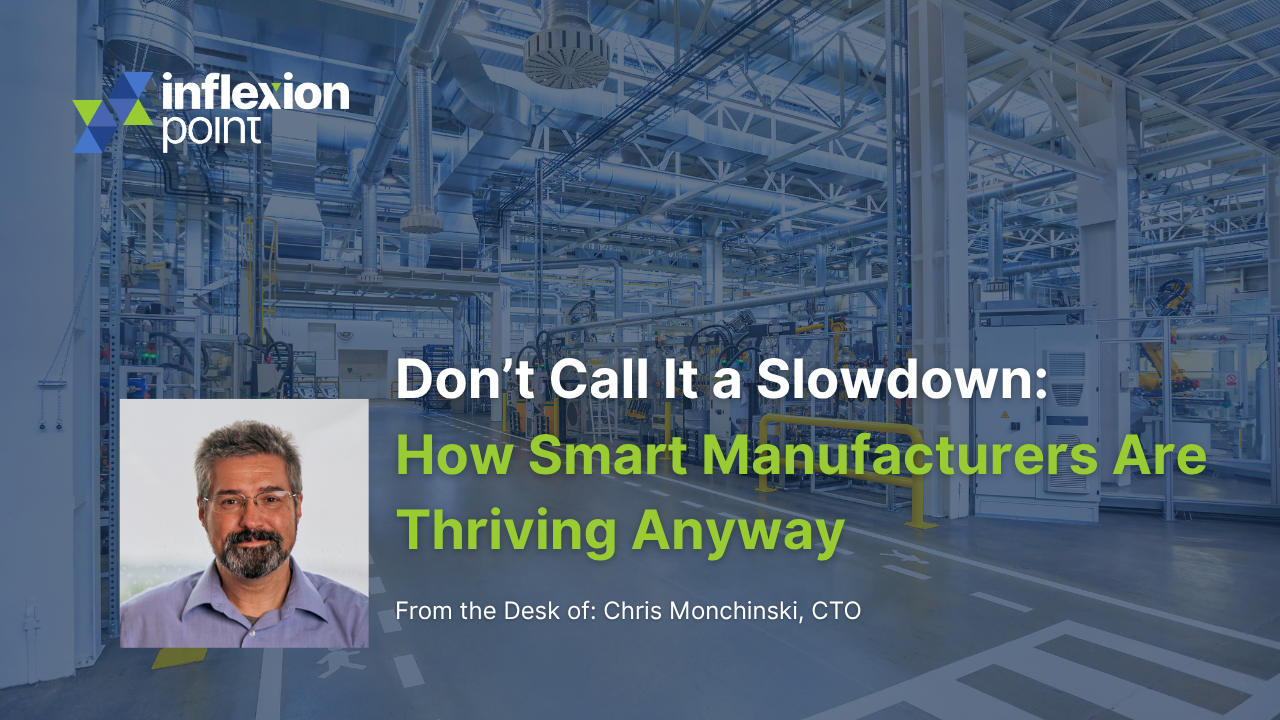From the Desk of Chris Monchinski, CTO
Yes, the June 2025 PMI came in at 49.0%. Yes, that technically means contraction. But if you’ve been around manufacturing long enough, you know not everything below 50 is doom and gloom.
Look a little closer, and you’ll see something more interesting: production is up. Inventory is stabilizing. The companies doing well right now? They’re not coasting on luck. They’re the ones who did the hard work of making their operations more agile over the past few years.
This is what resilience looks like in real life. And it didn’t happen by accident.
The difference is in the prep work
A lot of manufacturers learned the hard way during COVID-19 that supply chains don’t fix themselves. Forecasting, procurement, inventory—it all has to be connected if you want to stay ahead.
The ones gaining ground today tend to have a few things in common:
- They’ve invested in real-time visibility across inventory, production, and demand
- They’ve standardized processes so teams aren’t working in silos
- They’ve built out predictive analytics to better anticipate supply needs and disruptions
- And they’ve taken the time to integrate systems so decisions are based on current, connected data—not spreadsheets and gut checks
It’s not just digital transformation for the sake of it—it’s practical, grounded systems integration. And it works.
One example we know well: Orca Bio
Orca Bio is in the business of delivering life-saving therapies—and doing it quickly. That means they can’t afford surprises in their supply chain.
We helped them roll out an MES that does more than just track inventory. It connects production forecasts with actual consumption and automates procurement down to the pipettes and gloves. Instead of fielding one-off requests, their system aggregates what’s needed, finds the best pricing and lead times across vendors, and keeps their inventory levels where they need to be.
It’s streamlined. It’s scalable. And it’s taken a huge chunk of uncertainty out of their day-to-day operations.
You can read more about it here ›
This isn’t just for the Orca Bios of the world
You don’t need a huge budget or a brand-new facility to start making this kind of progress. We’ve seen small and mid-size manufacturers make serious gains just by cleaning up their data, connecting their systems, and giving their teams tools that actually talk to each other.
And right now? That kind of agility matters more than ever. Because even if the headlines say “contraction,” the ones who’ve done the work aren’t hitting pause. They’re moving forward—with confidence.
Want to see what this could look like for your facility? Let’s talk.



